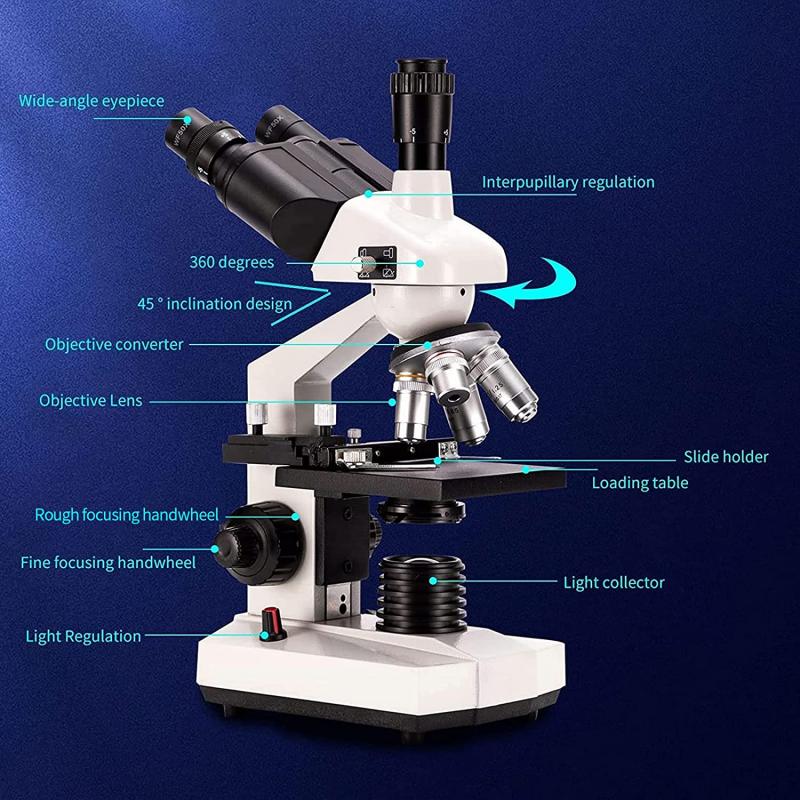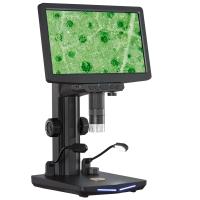What Can You See Through An Electron Microscope ?
An electron microscope uses a beam of electrons to create an image of a specimen. It can magnify objects up to 2 million times, allowing scientists to see details that are not visible with a traditional light microscope. With an electron microscope, you can see the ultrastructure of cells, including organelles such as mitochondria, ribosomes, and the endoplasmic reticulum. You can also see viruses, bacteria, and other microorganisms in great detail. In addition, an electron microscope can be used to examine the structure of materials, such as metals, ceramics, and polymers, at the atomic level. This makes it a valuable tool for materials science and engineering. Overall, an electron microscope provides a powerful tool for exploring the microscopic world and advancing our understanding of the natural and man-made world.
1、 Atomic structure of materials
What can you see through an electron microscope? The answer is the atomic structure of materials. Electron microscopes use a beam of electrons to create an image of the sample being studied. The resolution of electron microscopes is much higher than that of light microscopes, allowing scientists to see the fine details of the atomic structure of materials.
With an electron microscope, scientists can see the arrangement of atoms in a material, as well as the defects and imperfections that may be present. This information is crucial for understanding the properties of materials and how they behave under different conditions.
In recent years, advances in electron microscopy have allowed scientists to see even more detail in materials. For example, aberration-corrected electron microscopy can provide images with sub-angstrom resolution, allowing scientists to see individual atoms and even the positions of their electrons.
Furthermore, electron microscopy can also be used to study the behavior of materials under different conditions, such as high temperatures or pressures. This information can be used to design new materials with specific properties for a wide range of applications, from electronics to energy storage.
In conclusion, electron microscopy is a powerful tool for studying the atomic structure of materials. With its high resolution and ability to study materials under different conditions, it has become an essential tool for materials science research.
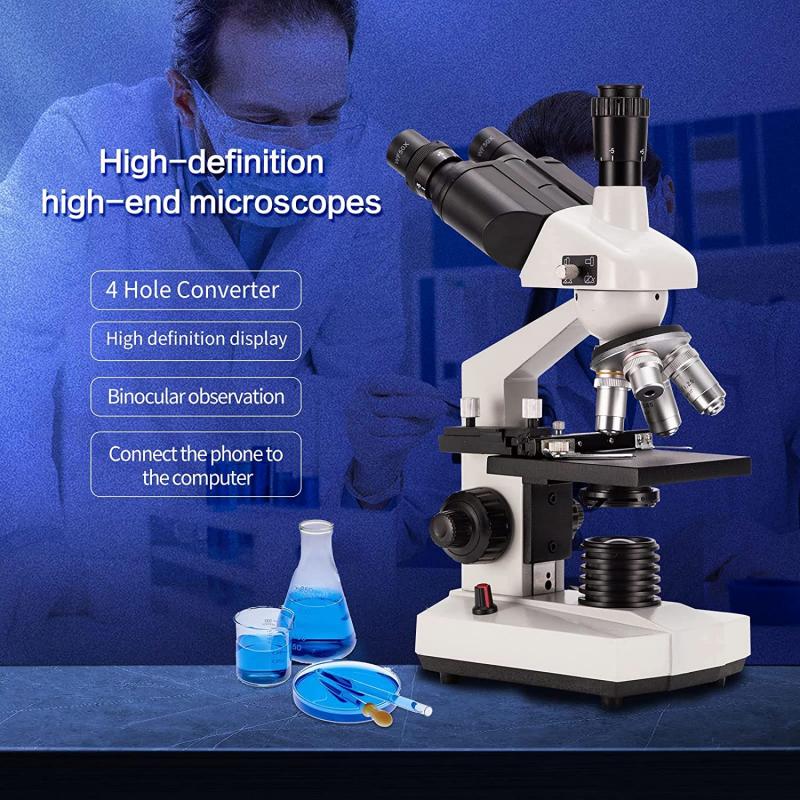
2、 Biological cells and tissues
What can you see through an electron microscope? One of the most fascinating things that can be observed through an electron microscope is biological cells and tissues. With the help of electron microscopy, scientists have been able to study the intricate details of cells and tissues at a level of resolution that was previously impossible to achieve.
Electron microscopy has allowed researchers to observe the ultrastructure of cells, including the arrangement of organelles, the structure of the cell membrane, and the cytoskeleton. This has led to a better understanding of cellular processes such as protein synthesis, cell division, and cell signaling.
In addition to studying individual cells, electron microscopy has also been used to examine tissues. By examining the structure of tissues at a microscopic level, researchers have been able to gain insights into the mechanisms of disease and develop new treatments.
One of the latest developments in electron microscopy is cryo-electron microscopy (cryo-EM), which allows researchers to study biological molecules and complexes in their native state. This technique has revolutionized the field of structural biology, enabling researchers to visualize the structure of proteins and other biomolecules at near-atomic resolution.
In conclusion, electron microscopy has been a powerful tool for studying biological cells and tissues, providing insights into their structure and function. With the development of new techniques such as cryo-EM, we can expect to gain even deeper insights into the workings of the microscopic world.
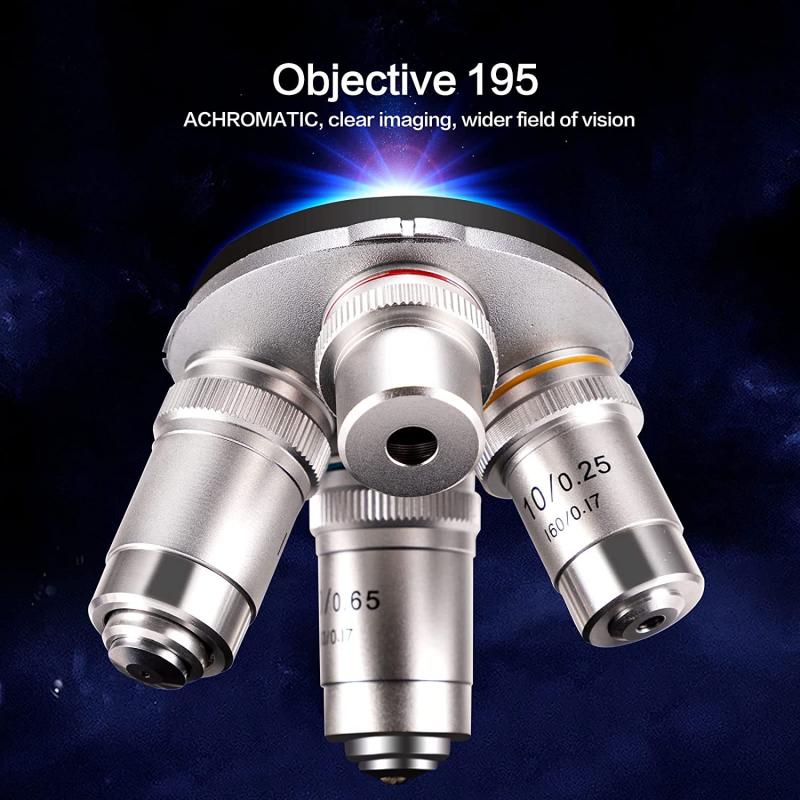
3、 Nanoparticles and nanomaterials
What can you see through an electron microscope? Nanoparticles and nanomaterials. An electron microscope is a powerful tool that uses a beam of electrons to create high-resolution images of tiny objects. It is capable of magnifying objects up to 10 million times, allowing scientists to see things that are too small to be seen with a traditional light microscope.
One of the most important applications of electron microscopy is in the study of nanoparticles and nanomaterials. These are materials that are typically less than 100 nanometers in size, and they have unique properties that make them useful in a wide range of applications, from electronics to medicine.
With an electron microscope, scientists can study the structure and properties of nanoparticles and nanomaterials in great detail. They can see how the atoms are arranged, how the particles interact with each other, and how they respond to different stimuli.
Recent advances in electron microscopy have made it possible to study nanoparticles and nanomaterials in even greater detail. For example, cryo-electron microscopy allows scientists to study these materials at extremely low temperatures, which can reveal new insights into their behavior.
Overall, electron microscopy is an essential tool for studying nanoparticles and nanomaterials, and it will continue to play a critical role in advancing our understanding of these materials and their potential applications.
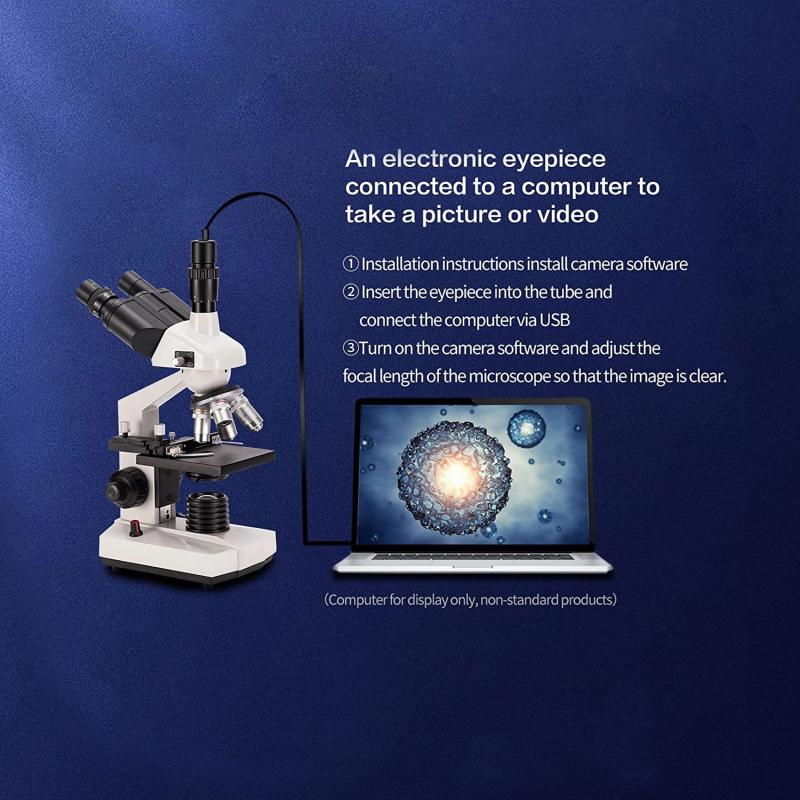
4、 Surface topography of materials
What can you see through an electron microscope? One of the most significant applications of electron microscopy is the observation of surface topography of materials. Electron microscopes use a beam of electrons to create high-resolution images of the surface of a sample. This allows scientists to study the structure and properties of materials at the nanoscale level.
With the latest advancements in electron microscopy, researchers can now observe the surface topography of materials with unprecedented detail. For example, they can study the surface of a material at the atomic level, allowing them to understand the arrangement of atoms and how they interact with each other. This information is crucial for developing new materials with specific properties, such as strength, conductivity, and durability.
Moreover, electron microscopy can also reveal the surface morphology of biological samples, such as cells and tissues. This has led to significant breakthroughs in the field of biology, allowing scientists to study the structure and function of cells in greater detail than ever before.
In conclusion, electron microscopy is a powerful tool for studying the surface topography of materials. With the latest advancements in technology, researchers can now observe materials at the atomic level, providing valuable insights into their properties and behavior. This has significant implications for the development of new materials and the advancement of various fields of science.
